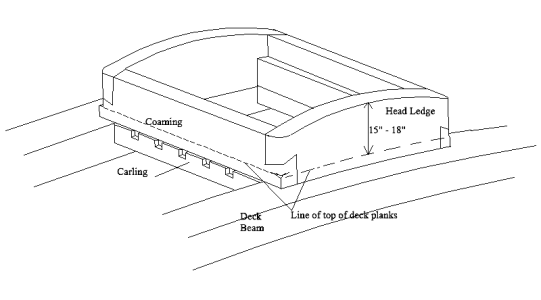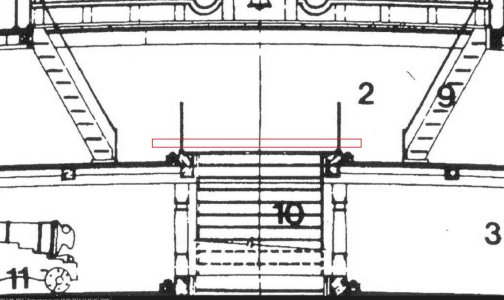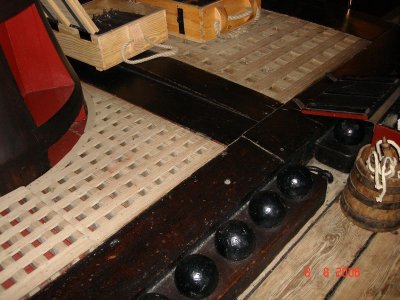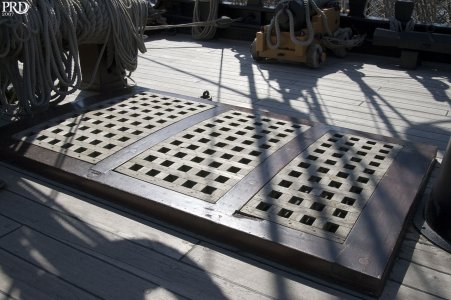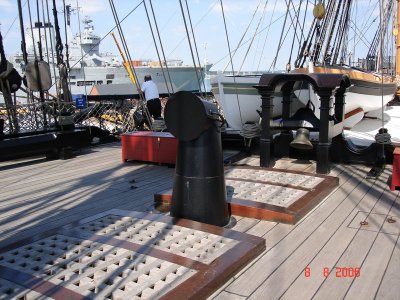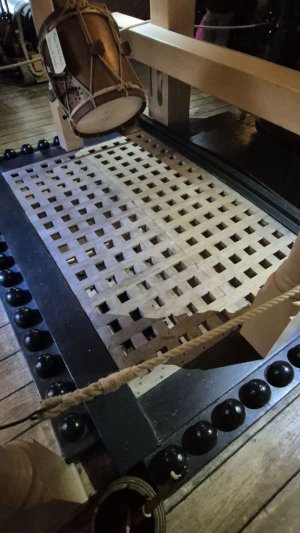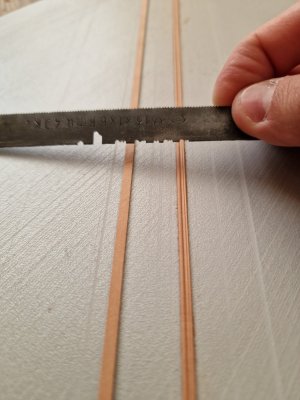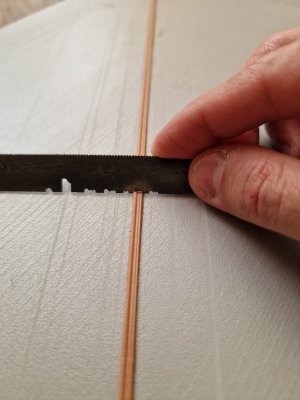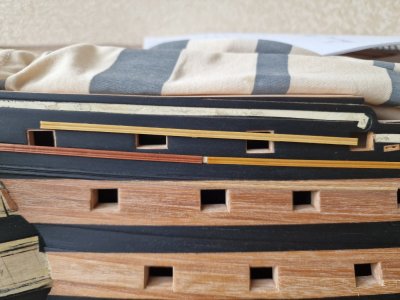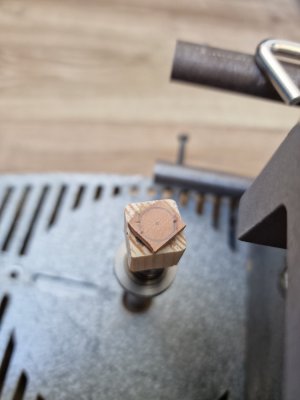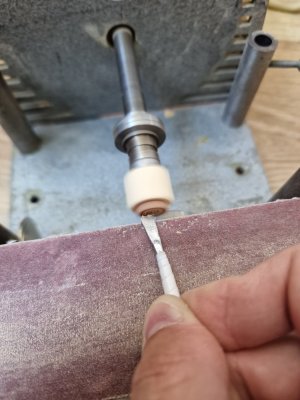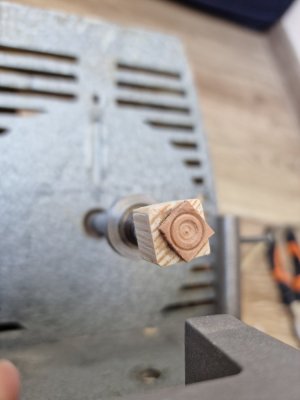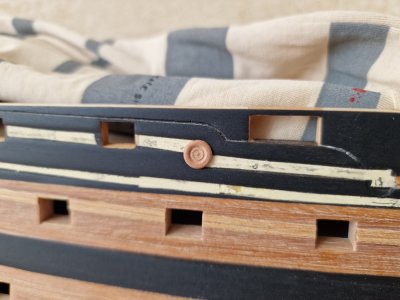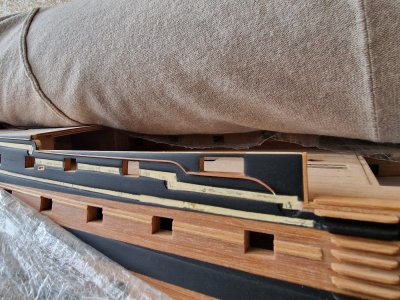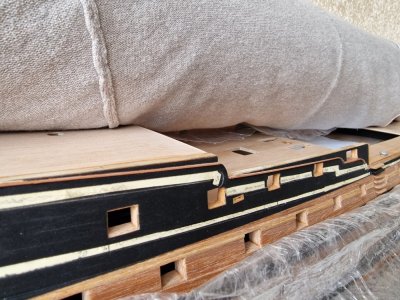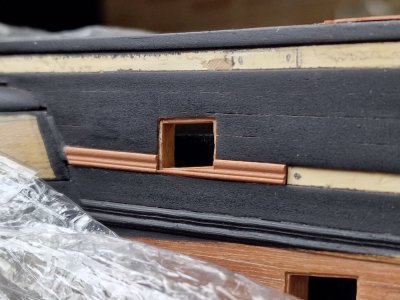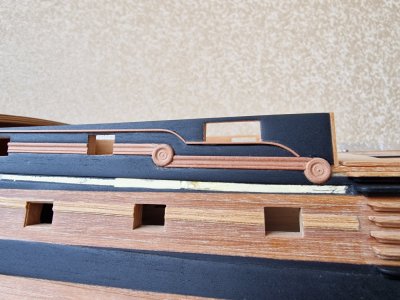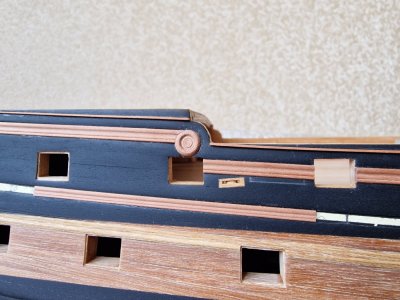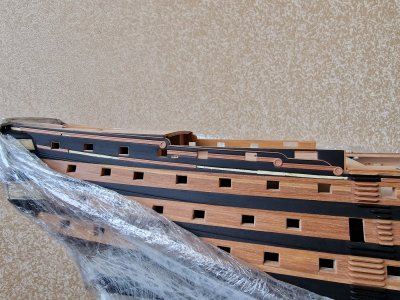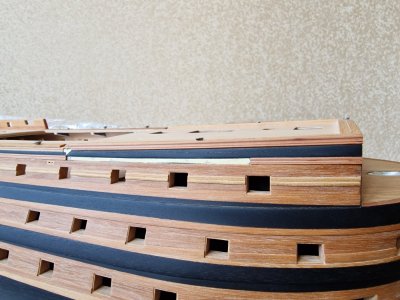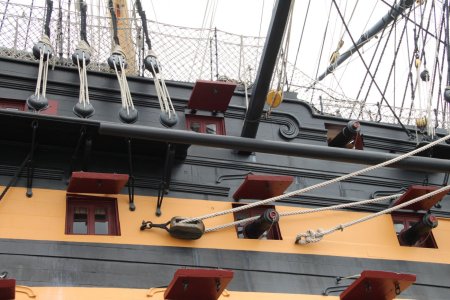02.2024
So, the grates have been sanded, and it’s time to fit them to the hull.
The sanding is not final yet. I still need to round off the corners and perfect them.
Plus, I still need to make the bases for the cannonballs, which were placed around the entire perimeter of the grates.
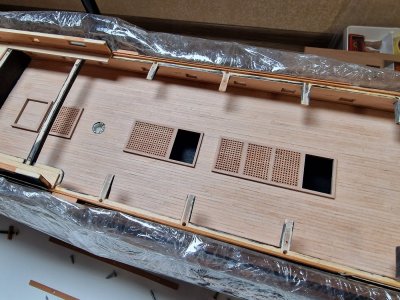
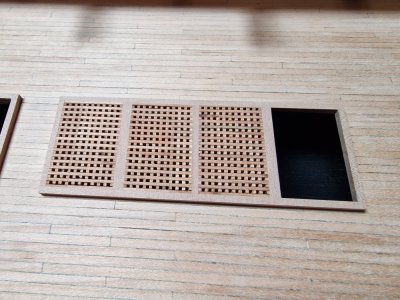
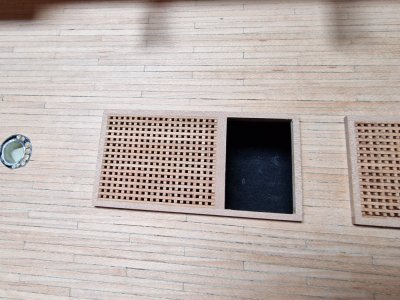
The far ladder will barely be visible, but I decided to make it not as a simple imitation but with an actual staircase, for which I had to create an opening.
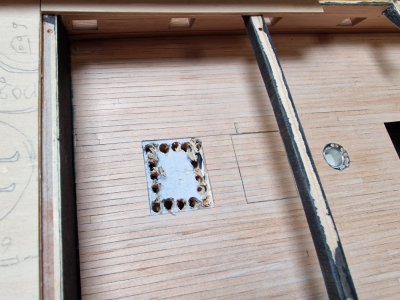
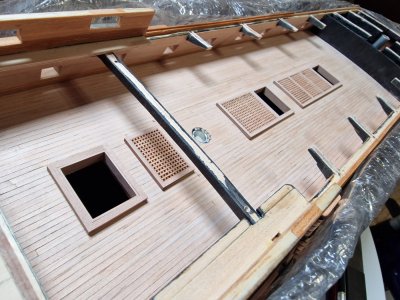
Since there is no deck below, the bottom part of the ladder will be suspended in the air. However, none of this will be visible. Only the upper part will be slightly visible. The other two ladders rest on the false lower deck, which I painted black, and it will also not be visible.
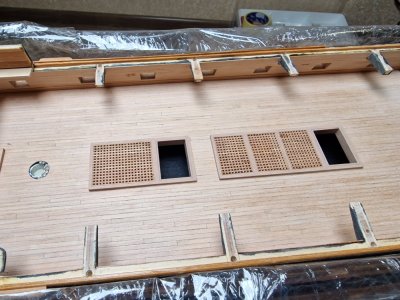
And after the final finishing, the gratings will look like this. All that remains is to add the stands for the cannonballs.
So, what do you think of the finished gratings?
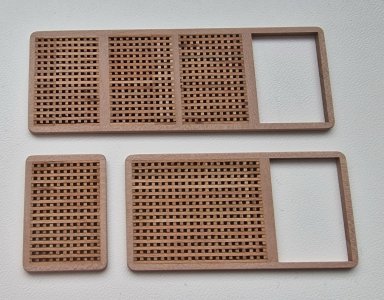
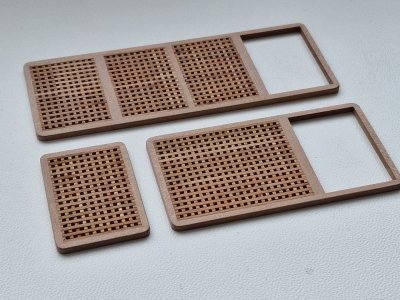
So, the grates have been sanded, and it’s time to fit them to the hull.
The sanding is not final yet. I still need to round off the corners and perfect them.
Plus, I still need to make the bases for the cannonballs, which were placed around the entire perimeter of the grates.



The far ladder will barely be visible, but I decided to make it not as a simple imitation but with an actual staircase, for which I had to create an opening.


Since there is no deck below, the bottom part of the ladder will be suspended in the air. However, none of this will be visible. Only the upper part will be slightly visible. The other two ladders rest on the false lower deck, which I painted black, and it will also not be visible.

And after the final finishing, the gratings will look like this. All that remains is to add the stands for the cannonballs.
So, what do you think of the finished gratings?






